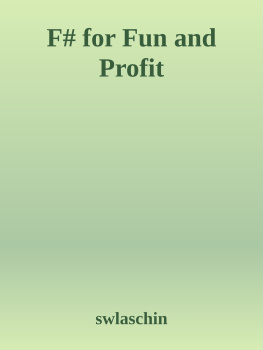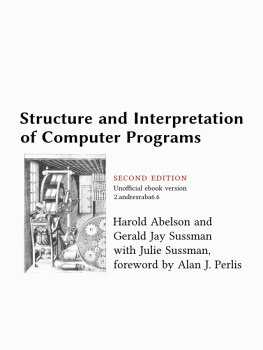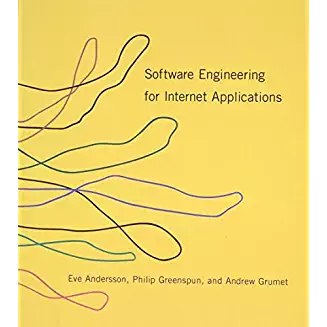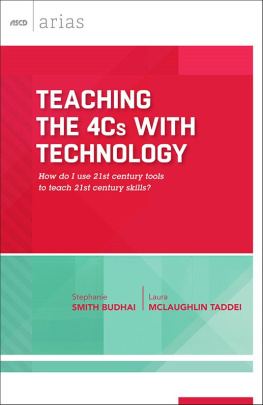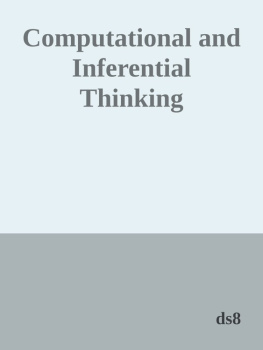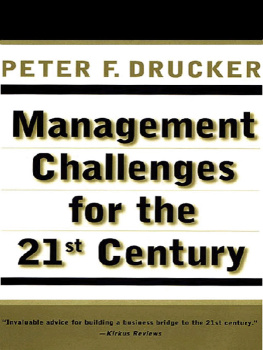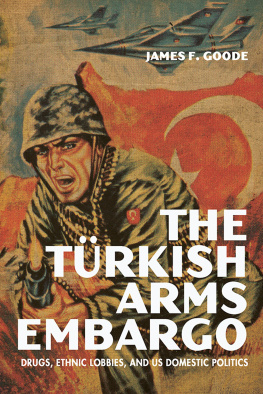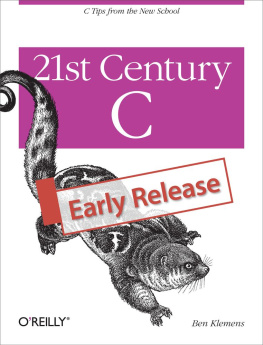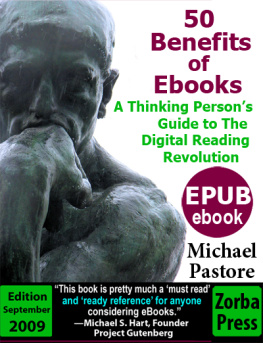it-ebooks - Statistical Thinking for the 21st Century
Here you can read online it-ebooks - Statistical Thinking for the 21st Century full text of the book (entire story) in english for free. Download pdf and epub, get meaning, cover and reviews about this ebook. year: 2019, publisher: iBooker it-ebooks, genre: Romance novel. Description of the work, (preface) as well as reviews are available. Best literature library LitArk.com created for fans of good reading and offers a wide selection of genres:
Romance novel
Science fiction
Adventure
Detective
Science
History
Home and family
Prose
Art
Politics
Computer
Non-fiction
Religion
Business
Children
Humor
Choose a favorite category and find really read worthwhile books. Enjoy immersion in the world of imagination, feel the emotions of the characters or learn something new for yourself, make an fascinating discovery.

- Book:Statistical Thinking for the 21st Century
- Author:
- Publisher:iBooker it-ebooks
- Genre:
- Year:2019
- Rating:5 / 5
- Favourites:Add to favourites
- Your mark:
- 100
- 1
- 2
- 3
- 4
- 5
Statistical Thinking for the 21st Century: summary, description and annotation
We offer to read an annotation, description, summary or preface (depends on what the author of the book "Statistical Thinking for the 21st Century" wrote himself). If you haven't found the necessary information about the book — write in the comments, we will try to find it.
Statistical Thinking for the 21st Century — read online for free the complete book (whole text) full work
Below is the text of the book, divided by pages. System saving the place of the last page read, allows you to conveniently read the book "Statistical Thinking for the 21st Century" online for free, without having to search again every time where you left off. Put a bookmark, and you can go to the page where you finished reading at any time.
Font size:
Interval:
Bookmark:
In 2018 I began teaching an undergraduate statistics course at Stanford (Psych 10/Stats 60). I had never taught statistics before, and this was a chance to shake things up. I have been increasingly unhappy with undergraduate statistics education in psychology, and I wanted to bring a number of new ideas and approaches to the class. In particular, I wanted to bring to bear the approaches that are increasingly used in real statistical practice in the 21st century. As Brad Efron and Trevor Hastie laid out so nicely in their book Computer Age Statistical Inference: Algorithms, Evidence, and Data Science, these methods take advantage of todays increased computing power to solve statistical problems in ways that go far beyond the more standard methods that are usually taught in the undergraduate statistics course for psychology students.
The first year that I taught the class, I used Andy Fields amazing graphic novel statistics book, An Adventure in Statstics, as the textbook. There are many things that I really like about this book in particular, I like the way that it frames statistical practice around the building of models, and treats null hypothesis testing with sufficient caution (though insufficient disdain, in my opinion). Unfortunately, most of my students hated the book, primarily because it involved wading through a lot of story to get to the statistical knowledge. I also found it wanting because there are a number of topics (particular those from the field of artificial intelligence known as machine learning) that I wanted to include but were not discussed in his book. I ultimately came to feel that the students would be best served by a book that follows very closely to my lectures, so I started writing down my lectures into a set of computational notebooks that would ultimately become this book. The outline of this book follows roughly that of Fields book, since the lectures were originally based in large part on the flow of that book, but the content is substantially different (and also much less fun and clever).
I am trained as a psychologist and neuroscientist, not a statistician. However, my research on brain imaging for the last 20 years has required the use of sophisticated statistical and computational tools, and this has required me to teach myself many of the fundamental concepts of statistics. Thus, I think that I have a solid feel for what kinds of statistical methods are important in the scientific trenches. There are almost certainly some things in this book that would annoy a real statistician (for example, Im sure that there are places where I should have put a  on a varible but did not).
on a varible but did not).
Having said that, I welcome input from readers with greater statistical expertise than mine.
In my course, students learn to analyze data hands-on using the R language. The question Why R? could be interpreted to mean Why R instead of a graphical software package like (insert name here)?. After all, most of the students who enroll in my class have never programmed before, so teaching them to program is going to take away from instruction in statistical concepts. My answer is that I think that the best way to learn statistical tools is to work directly with data, and that working with graphical packages insulates one from the data and methods in way that impedes true understanding. In addition, for many of the students in my class this may be the only course in which they are exposed to programming; given that programming is an essential ability in a growing number of academic fields, I think that providing these students with basic programming literacy is critical to their future success, and will hopefully inspire at least a few of them to learn more.
The question could also be interpreted to mean Why R instead of (insert language here)?. On this question I am much more conflicted, because I deeply dislike R as a programming language (I greatly prefer Python). Why then do I use it? The first answer to the question is practical nearly all of the potential teaching assistants (mostly graduate students in our department) have experience with R, since our graduate statistics course uses R. In fact, most of them have much greater skill with R than I do! On the other hand, relatively few of them have expertise in Python. Thus, if I want an army of skilled teaching assistants, it makes sense to use R.
The other reason is that the free Rstudio software makes using R relatively easy for new users. In particular, I like the RMarkdown Notebook feature that allows the mixing of narrative and executable code with integrated output. Its similar in spirit to the Jupyter notebooks that many of us use for Python programming, but I find it easier to deal with because its just a plain text file. In my class, I give students a skeleton RMarkdown file for problem sets, and they submit the file with their solution added, which I then score using a set of automated grading scripts.
This book is meant to be a living document, which is why its source is available online at https://github.com/poldrack/psych10-book. If you find any errors in the book or want to make a suggestion for how to improve it, please open an issue on the Github site. Even better, submit a pull request with your suggested change.
Id first like to thank Susan Holmes, who first inspired me to consider writing this book. Lucy King provided detailed comments and edits on the entire book, and helped clean up the code so that it was consistent with the Tidyverse. Michael Henry Tessler provided very helpful comments on the Bayesian analysis chapter. Id also like to thank others who provided helpful comments and suggestions: Wesley Tansey, Jack Van Horn.
Statistical thinking will one day be as necessary for efficient citizenship as the ability to read and write. - H.G. Wells
Statistical thinking is a way of understanding a complex world by describing it in relatively simple terms that nonetheless capture essential aspects of its structure, and that also provide us some idea of how uncertain we are about our knowledge. The foundations of statistical thinking come primarily from mathematics and statistics, but also from computer science, psychology, and other fields of study.
We can distinguish statistical thinking from other forms of thinking that are less likely to describe the world accurately. In particular, human intuition often tries to answer the same questions that we can answer using statistical thinking, but often gets the answer wrong. For example, in recent years most Americans have reported that they think that violent crime was worse compared to the previous year (Pew Research Center). However, a statistical analysis of the actual crime data shows that in fact violent crime has steadily decreased since the 1990s. Intuition fails us because we rely upon best guesses (which psychologists refer to as heuristics) that can often get it wrong. For example, humans often judge the prevalence of some event (like violent crime) using an availability heuristic that is, how easily can we think of an example of violent crime. For this reason, our judgments of increasing crime rates may be more reflective of increasing news coverage, in spite of an actual decrease in the rate of crime. Statistical thinking provides us with the tools to more accurately understand the world and overcome the fallibility of human intuition.
Font size:
Interval:
Bookmark:
Similar books «Statistical Thinking for the 21st Century»
Look at similar books to Statistical Thinking for the 21st Century. We have selected literature similar in name and meaning in the hope of providing readers with more options to find new, interesting, not yet read works.
Discussion, reviews of the book Statistical Thinking for the 21st Century and just readers' own opinions. Leave your comments, write what you think about the work, its meaning or the main characters. Specify what exactly you liked and what you didn't like, and why you think so.

